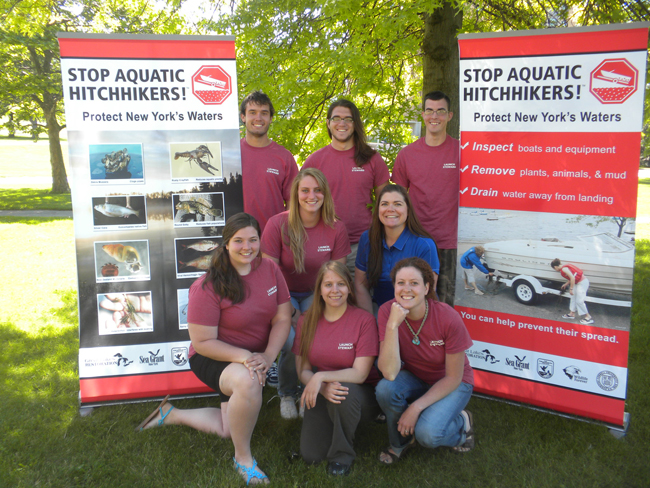
Launch Steward Program Coordinator New York Sea Grant Coastal Community Development Specialist Mary Penney (in blue shirt),seen here with the 2013 New York Sea Grant Launch Stewards (standing left to right, third row: Chief Steward Nick Spera, Clinton A. Whittaker, Jr., Ryan Thompson; second row: Brittney Rogers; first row: Heather Dunham, Sophia Oliveira, and Megan Pistolese. The stewards are college students helping to educate water users about how they can help slow the spread of aquatic invasive species as part of a statewide effort. Photo: Dave White, NY Sea Grant
All this past summer, New York Sea Grant's Launch Stewards have been
interacting with the public at waterfront sites in a number of eastern
Lake Ontario, Oneida Lake and surrounding inland river counties -
Oswego, Jefferson, Madison, Oneida, Onondaga and Wayne. While at any of
these over a dozen launch sites, these stewards have been offering voluntary
watercraft inspection education to motorized and non-motorized boaters.
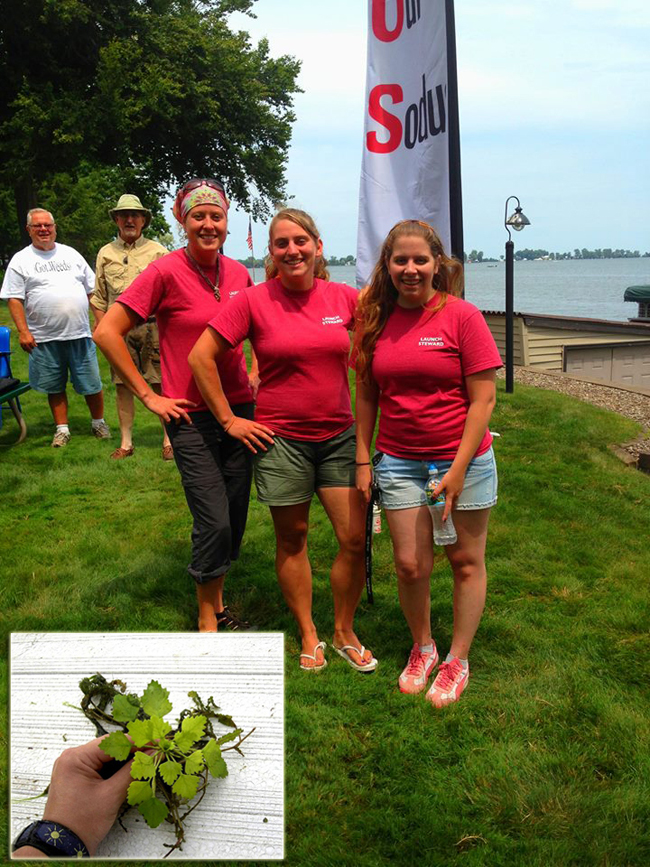
The stewards - including Brittney Rogers, Sophia Oliveira, Megan
Pistolese (pictured above, left - right) also attended some events to
help educate about aquatic invasive species. In mid-July, they
pitched in at a weed pull with Save Our Sodus for water chestnut (above, inset picture), which
can overtake waterways. These aquatic invasive plants therefore pose a
serious risk to the health of waterbodies such as Sodus Bay, located on
the south shore of Lake Ontario. Photo: Save Our Sodus; Inset photo: Ben Robedee/NYSG Steward Program
Here's how they proliferate: An individual water chestnut seed can give
rise to 10 to 15 rosettes, each of which can produce 15 to 20 seeds.
Thus, one seed can produce 300 new seeds in a single year.
“The establishment of water chestnut can result in large floating mats
of vegetation that 'clog' aquatic habitats and limit the penetration of
sunlight into the water column, impeding the growth of native plants and
ultimately disrupting the food web,” says NYSG's Coastal Community
Development Specialist Mary Penney, who oversees the Launch Steward
Program.
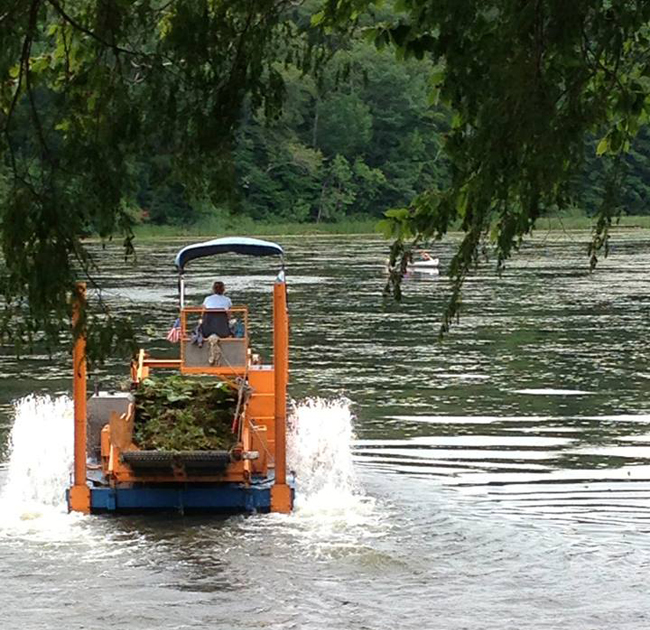
A mechanical aquatic weed harvester was used to gather water chestnut during the mid-July weed pull event. Photo: Save Our Sodus
There's a reason why July is an ideal time for such as weed pull. Water
Chestnuts begin to flower in mid to late July and nuts will ripen
approximately one month later. Flowering and seed production continue
into the fall when frost kills the floating rosettes. The mature nuts
sink to the bottom when dropped and can remain viable for up to 8 to 12
years. The plant spreads either by the rosettes detaching from their
stems and floating to another area, or more often by the nuts being
swept by currents or waves to other parts of the lake or stream. The
plant over winters entirely by seed.
NYSG's Launch Stewards can be seen in footage shot by a YNN news
reporter, who filed a report a few days after the mid-July weed pull.
See the YouTube clip above or NYSG's related news item, "Volunteers battle water chestnut growth in Oswego County."
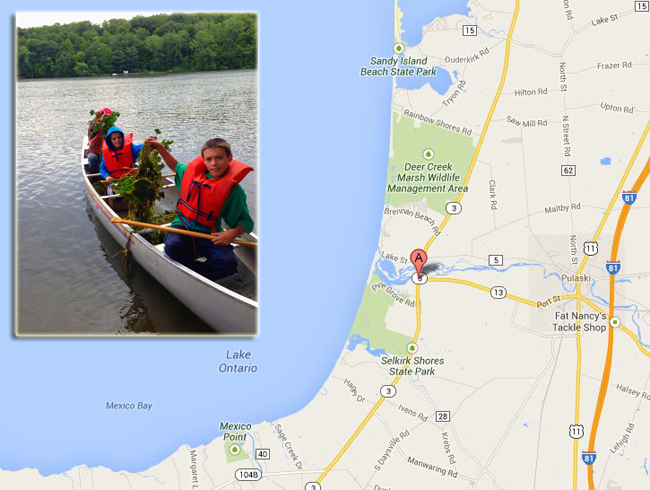
A local Boy Scout group also helped out (inset photo, above) with the invasive weed pull, which was held on July 13, 2013 at Port Ontario (marked with "A" pinpoint in photo above).
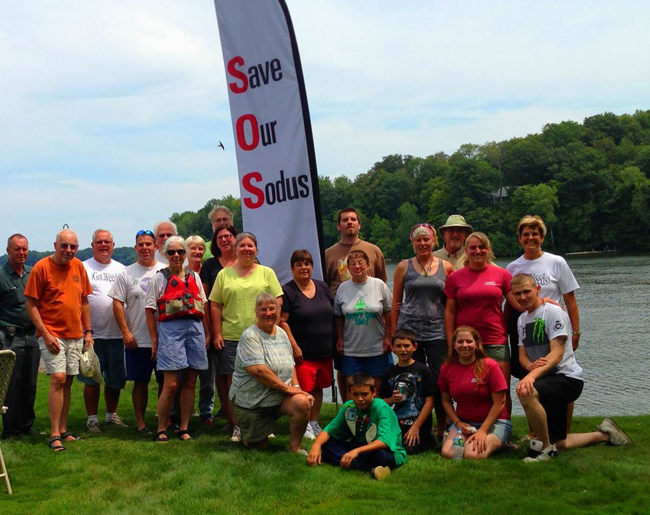
Throughout this past summer, some of NYSG's Launch Stewards (including those pictured above, in the pink T-shirts) wrote a series of articles (listed below) on how recreational users can pitch in to stop the spread of aquatic invasive species. Others generated content for a blog, as detailed in NYSG's news item, "New Launch Stewards Blog Covers Waterfront from Sodus Bay to Oneida Lake."